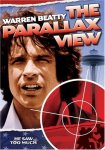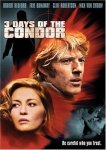Panic in the 70s
In the 100+ year history of cinema, there is no doubt in my mind that the 70s represented the best era of filmmaking. It was a time driven by creativity, not box office. Films were driven by character, not plot and CGI was a meaningless acronym. Modern cinema evolved from the rules that were broken during this decade of decadence. The word “fuck” was first uttered in a major studio film in 1970. Sex became more graphic. Violence became more realistic. Even the summer blockbuster was invented in 1975. Modern masters like Scorsese, Coppola, Spielberg, and DePalma were mere novices paving the road to the future at twenty-four frames per second. Film today would not be where it is without the trends set in the 70s.
Films are time capsules. They reflect the trends of the era: The fashion, the cars, and the political climate. Nowhere is this more evident than in the films of the 70s. Just as film was evolving, we were evolving as a nation. Presidential scandals are fairly commonplace now but in 1972 the nation was rocked by Watergate. That, coupled with the growing dissatisfaction with the U.S. involvement in Vietnam, created a climate of unrest and mistrust with the government and it wasn’t long before those feelings translated to film. Thus, a niche genre was created in 1974 that had a healthy life throughout the decade: The paranoid thriller.
In a paranoid thriller you don’t know who to trust. You don’t trust your friends, you don’t trust your government and you certainly don’t trust your lover. Your home isn’t safe. Maybe it’s been bugged. You don’t go to the police. Maybe they’re in on it. The goal is for the audience to share the paranoia and confusion of the main character.

The Conversation

The Parallax View

Three Days of the Condor
Other notable paranoid thrillers of the 70s include Marathon Man (1976), the little seen Winter Kills (1979) and, to a more abstract degree, the critically lauded Invasion of the Body Snatchers (1978). These films are fun relics of their era and every film listed here is a skillful thriller in its own right. For fans of 70s cinema, these are required viewing but for those interested in broadening their film palette, I suggest you take a walk through this brief but memorable sub-genre. Just make sure you’re watching with someone you trust…
Trailers:
The Conversation (1974)
The Parallax View (1974)
Three Days of the Condor (1975)
All the President’s Men (1976)
Marathon Man (1976)
Invasion of the Body Snatchers (1978)
Winter Kills (1979)
“In the 100+ year history of cinema, there is no doubt in my mind that the 70s represented the best era of filmmaking. It was a time driven by creativity, not box office.”
Yes to the first sentence. No no no NO!!! to the second.
Yeah, I think it’s hard to argue that any era of filmmaking wasn’t driven by the box office. There was, however, something of a shift of day-to-day artistic control on a film from the studio to the director, no? Or at least that’s the narrative we’ve been sold–“a crop of young directors influenced by the French new wave brought auteur filmmaking to the US!”
I’d also be interested in how the paranoid sub-genre related to earlier films such as “The Manchurian Candidate.” What’s the difference between 50s and 70s paranoia? (Fear-of-other in “Manchuria” and the Bond films to fear-of-self in the 70s?)
The bigger narrative is that commerce is the enemy of creativity. It’s a narrative that permeates discourse on the arts, and it’s toxic.